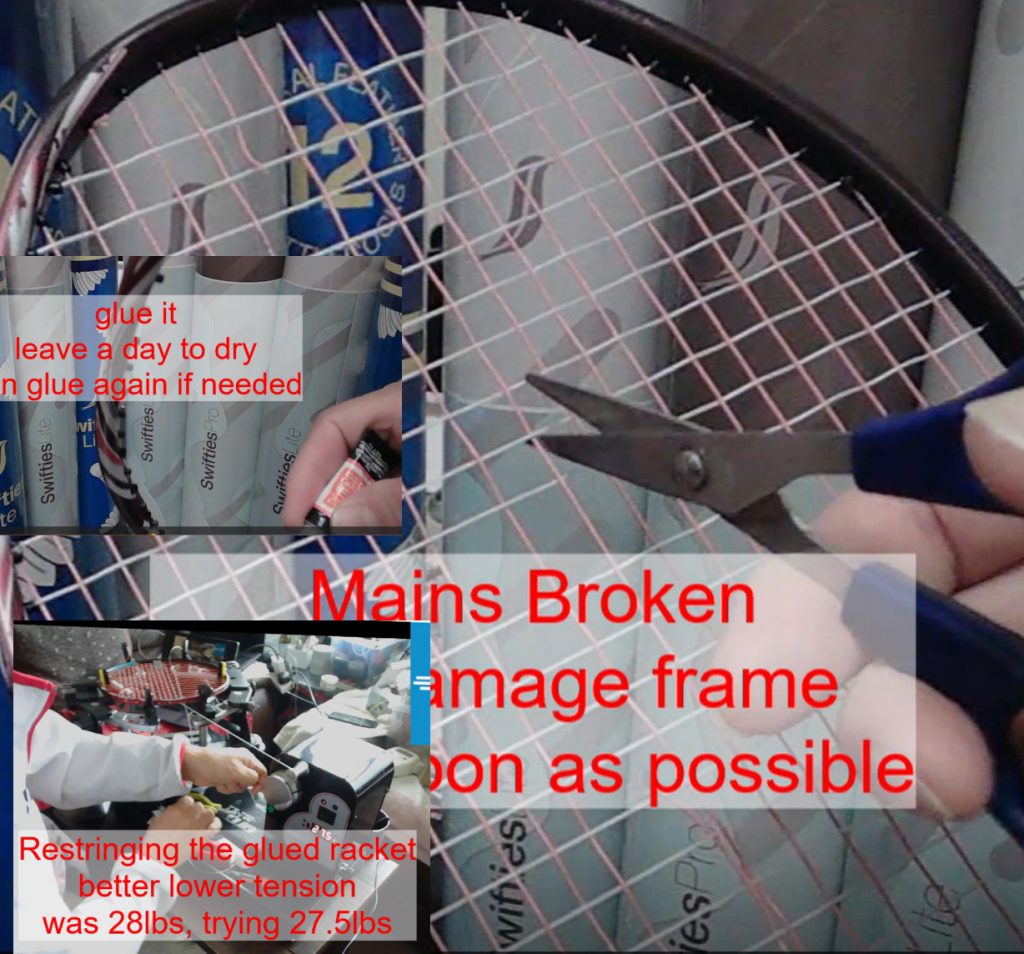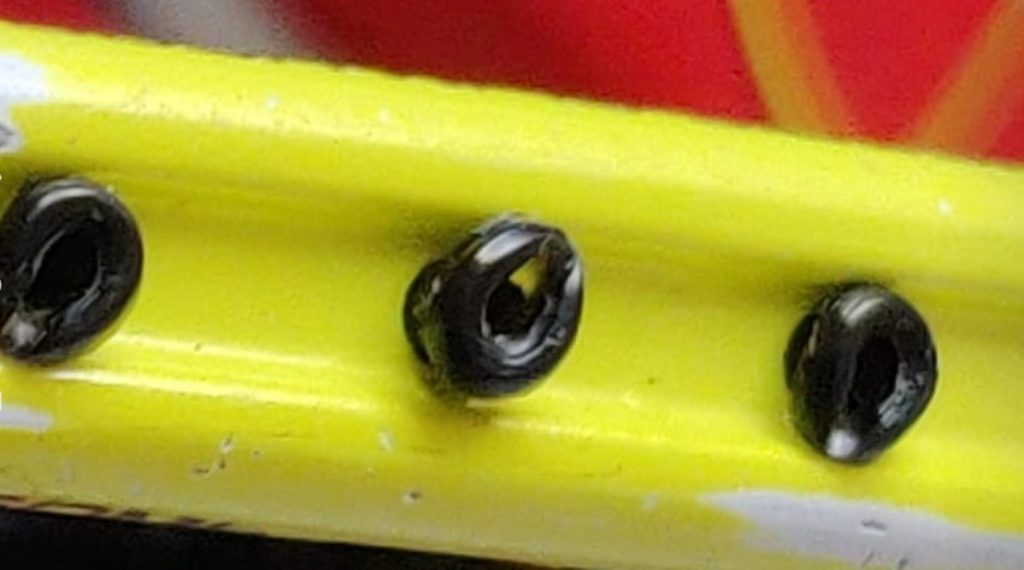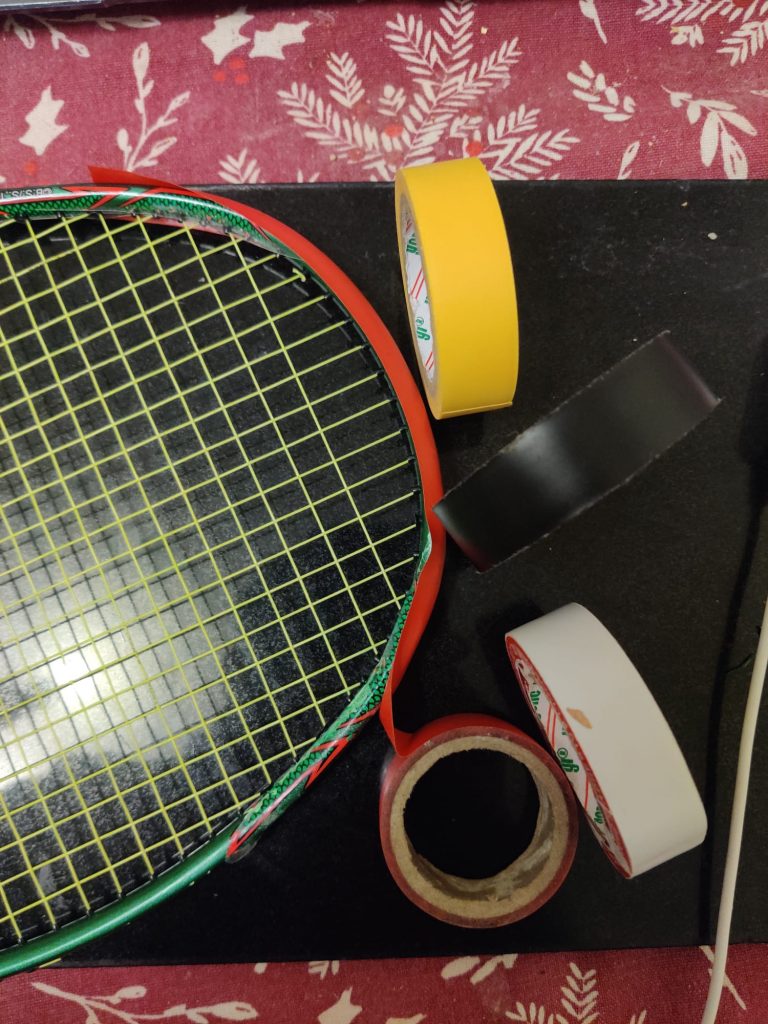Most strings should last quite a long time, but sometimes they can break quickly. There are many possible reasons for this.
Where they are most likely to break:
Usually, in the middle of the racket.
Strings often break in the center, also known as the "sweet spot," because that's where the shuttle is hit most often. This area takes the most impact, so it's more likely to wear out and break first.

Top Sides:
String breaks on the top sides are also quite common. The most common cause is a mishit, especially when playing with high string tension. Mishits happen when the shuttle hits the frame or off-center, which puts extra stress on the strings near the edges.
Another possible reason is when the racket accidentally touches the floor, which can also damage the strings.

anywhere from sides, or the main string getting stressed when smashing.
Grommet Damage:
This can also happen when the grommets are broken (see the picture). Grommets are the small plastic tubes that protect the strings where they pass through the frame. When they’re damaged or missing, the string touches the hard frame directly.
With higher tension, grommets are more likely to break. Once that happens, the string can be cut by the frame—sometimes with just one hit near that spot. In some cases, the string can even break during stringing, or just snap on its own over time, without any play at all.

What Should You Do When a String Breaks?
When a string breaks, you should cut all the strings as soon as possible. This is because broken strings create unbalanced tension, which can damage the frame—especially if the racket is strung at high tension.
However, what you do can also depend on which string broke and where it broke:
If a Main String Breaks:
Racket strings are made of mains (the straight vertical strings) and crosses (the horizontal ones).
Main strings are more likely to break, especially during powerful shots like smashes, because they take most of the force.
If you leave the broken main string in place, the frame can be under too much stress and might warp or crack.
If a main string breaks, you should cut all the strings right away to release the pressure evenly.
If a Cross String Breaks:
Cross strings (the horizontal ones) can also break, and it’s quite common, especially near the top side of the racket.
So in most cases, you don’t need to cut all the strings right away—but it’s still a good idea to restring soon to avoid uneven tension over time.
Normally, when a cross string breaks, it doesn’t put much stress on the frame, especially if it’s near the top.
Since cross strings are the last part strung during stringing, they don’t hold as much tension as the mains.
If a Cross String Breaks:
- If it breaks in the middle, it usually means the string was worn out, and you'll most likely need to cut all the strings and restring the racket.
- But if it breaks near the top or side, and the strings are still new, you might not need to cut everything. In some cases, it can be repaired instead of doing a full restring.
How to Repair a Broken Cross String:
If only one cross string is broken and the rest are fine, here’s a simple way to fix it:
Tie off both ends tightly to keep the tension stable.
Cut out the broken part of the cross string.
Tie a knot on each end to secure the remaining string.
Add a new piece of string to fill in the missing section, weaving it through the mains.
Some Grip can be reused
Using Electrical Tape for Badminton Rackets:
Electrical tape can be surprisingly useful for quick fixes and protection on your racket. Here are a few common ways to use it:
Securing or Protecting Strings:
You can also use it to lightly cover exposed string ends near the grommets or frame to prevent fraying or accidental contact.
Grip Wrapping:
Electrical tape can be used as a temporary grip. It’s not as comfortable as a real grip, but it works in a pinch and adds some tackiness to hold onto.
Covering Frame Ends or Paint Scratches:
If the paint on your racket frame is chipped or scratched—especially at the top—electrical tape can be wrapped around to protect the area and keep it from getting worse.




